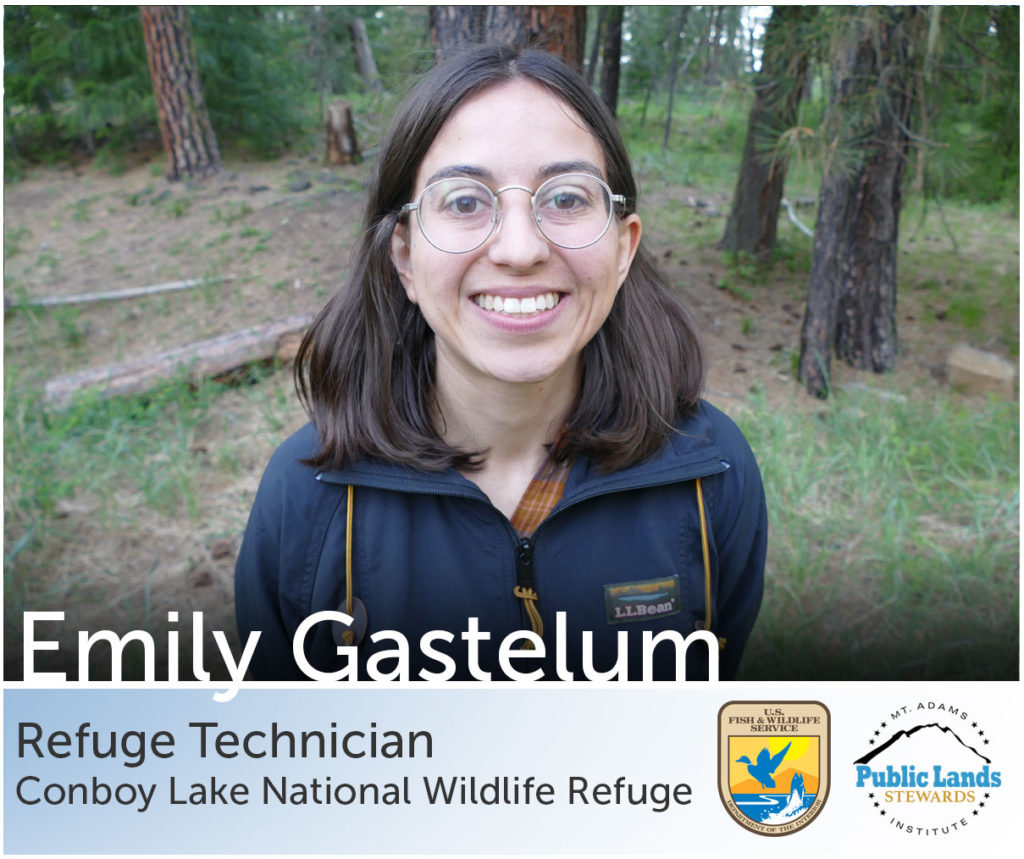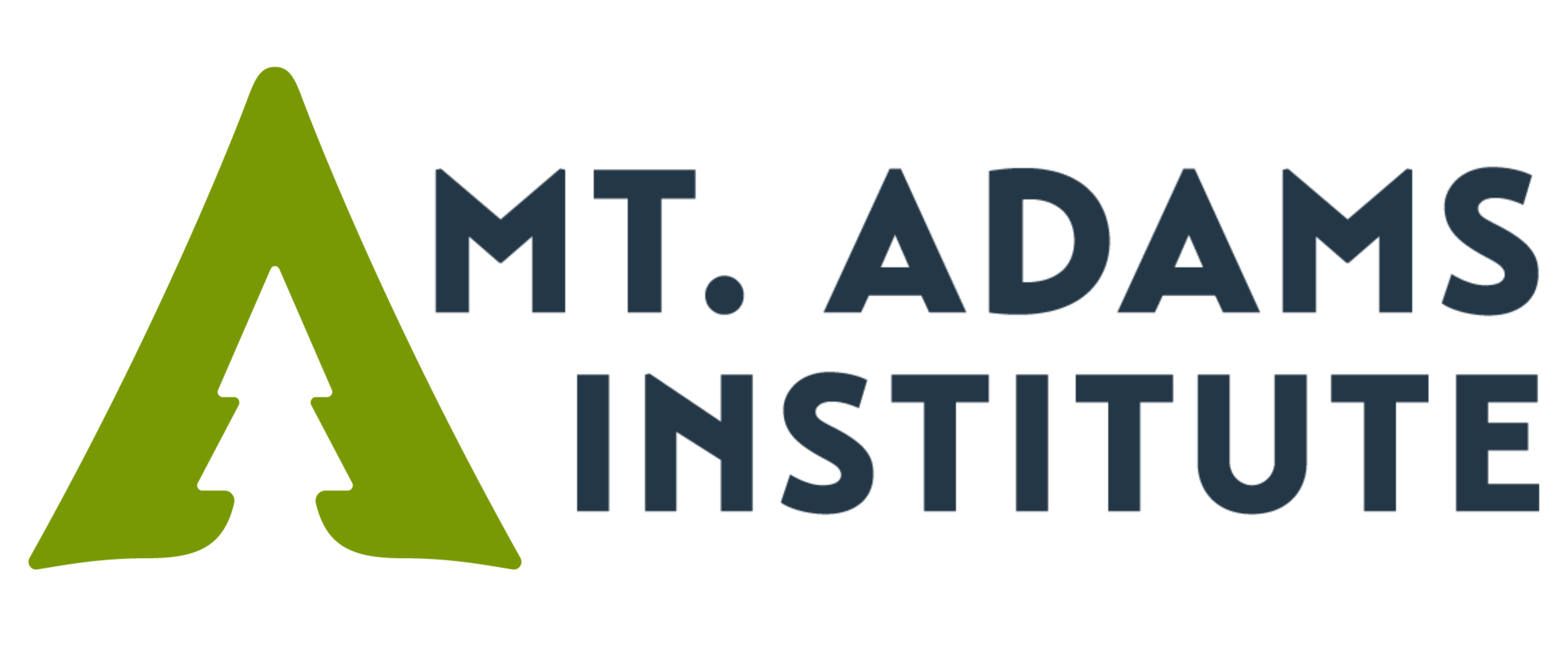
It is now October and Conboy Lake is painted with beautiful hues of orange, yellow and red as the quaking aspen leaves change to their fall colors. The wildlife is in full force; I can barely sleep through the sounds of elk bugling and owls hooting through the night. The landscape is so alive and flourishing that it’s hard to believe water levels are at an all time low and what aquatic habitat is left is nearly overran with invasive catfish and bullfrogs. Nature is good at hiding its wounds from the unsuspecting eye.
Since becoming an AmeriCorps Public Lands Steward (PLS), I’ve had many discussions with Mt. Adams Institute staff, the rest of the PLS members and my U.S. Fish and Wildlife coworkers about environmental principles. We’ve had several leave no trace talks and often compare our ideas of how nature should be used for recreation and conservation. While I really enjoyed having these talks and consider meeting people with like-minded ethics to be one of the great benefits of this position, I think even more valuable are the connections we’ve made outside of these circles.
As I talked about in my first blog, it’s been challenging to explain my position to people who don’t have biology or conservation backgrounds but I feel the most important thing to do as I leave my AmeriCorps experience behind is to keep spreading the word about the work I’ve done to control invasive species. So many folks are surprised that managing a population of catfish and bullfrogs on a small refuge can warrant six-months of hard work from two refuge technicians year after year. It’s not until I explain the harm that these species can do to native and endangered wildlife and the alarming pace at which they reproduce that people begin to understand the significance.
I take for granted my ability to see in a landscape its delicate ecological connections. I’ve gone to school for this and I’ve worked with wildlife, both of which have taught me to consider my impact in everything I do. Most people have very different relationships with their environment and I hope that by sharing my experience here, I can encourage people to simply think differently about the natural world they are a part of and see not just a pretty view but also the work it takes to maintain and support it.
During this last month on the refuge Hannah and I had the unfortunate experience of seeing an excavator dipped into a canal and return with thousands upon thousands of catfish in tow. We spent all summer pulling heavy nets of fish from those waters and alas, so many of the darn things still remain. At that moment it was hard not to be disappointed in the weak fruits of our labor but in retrospect, the experience emphasized how important it is to teach people about the deleterious effects of introducing non-native species to an environment.
I have little hope that total eradication of bullfrogs and catfish from Conboy Lake National Wildlife Refuge is possible but I do think that by educating we can create a future where we spend less time fixing the mistakes of our historically obtrusive use of nature and more time preserving it for what it is. I am sad that my time at Conboy Lake is finished but I look forward to seeking opportunities where I can continue to grow as both a steward and as an educator.

